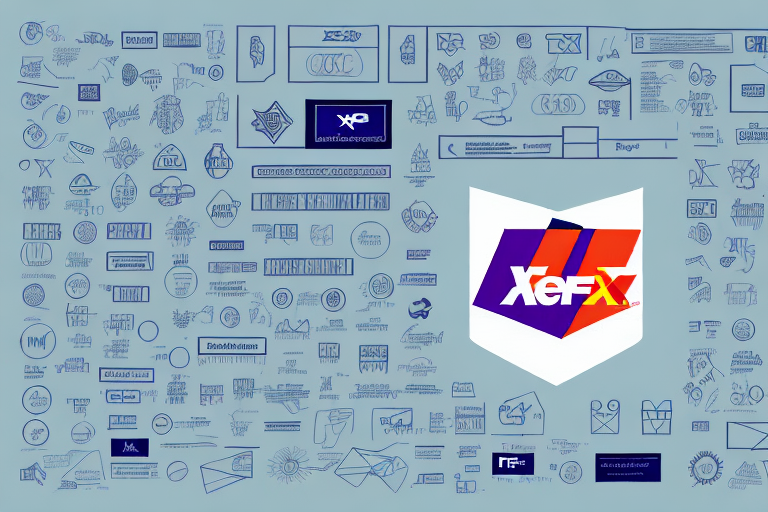Understanding Shipment Exceptions
When shipping items, the goal is to ensure they reach their destination seamlessly. However, disruptions can occur, leading to what is known as a shipment exception. Understanding these exceptions is crucial for minimizing their impact on both businesses and personal shipments. This guide provides an in-depth analysis of shipment exceptions, including their causes, effects, and strategies for prevention and resolution.
Common Reasons for Shipment Exceptions
Shipment exceptions can arise from various factors, including:
- Incorrect Addresses: Misformatted or incomplete addresses can prevent successful deliveries.
- Damaged Packaging: Inadequate packaging materials may lead to product damage during transit.
- Missing Documentation: Essential paperwork, especially for international shipping, can cause delays.
- Failed Delivery Attempts: Attempts to deliver when recipients are unavailable result in exceptions.
- Improper Shipping Methods: Selecting an unsuitable shipping method can lead to delays and additional costs.
- Customs Issues: For international shipments, items may be held up due to regulatory restrictions.
- Weather Conditions: Natural events like storms or floods can disrupt delivery schedules.
Understanding these causes allows shippers to implement strategies that reduce the likelihood of encountering shipment exceptions.
Types of Shipment Exceptions
Different types of shipment exceptions require varied approaches for resolution:
- Delivery Delays: Often caused by high shipping volumes or unforeseen events.
- Lost Packages: Can occur due to tracking errors or mishandling during transit.
- Damaged Goods: Result from inadequate packaging or rough handling.
- Customs Holds: Arise from incomplete documentation or restricted items.
Recognizing the type of exception is the first step toward effective resolution.
Tracking and Identifying Shipment Exceptions
Effective Shipment Tracking
Tracking shipments is essential for identifying exceptions early. Utilizing tracking numbers provided by carriers allows you to monitor your package's journey in real-time. Most shipping carriers offer tracking tools on their websites or mobile apps, providing updates on the package's status and location.
Setting Up Alerts
To stay informed about any changes or potential issues with your shipment, set up alerts. Many carriers offer notifications via email or SMS that inform you of significant status updates, such as delays or delivery attempts.
Identifying Exceptions Early
Early identification of shipment exceptions enables timely intervention. For example, if a tracking update indicates a delay due to weather conditions, you can inform the recipient and adjust delivery expectations accordingly.
The Impact of Shipment Exceptions on Delivery Timelines
Delay in Deliveries
Shipment exceptions can significantly disrupt delivery schedules, especially for time-sensitive shipments. For businesses, this can affect customer satisfaction and lead to financial losses.
Return to Sender
In some cases, shipment exceptions may result in the package being returned to the sender. This not only delays the original shipment but also incurs additional shipping costs.
Contingency Planning
Having a contingency plan is essential to handle unexpected delays. This may involve choosing alternative shipping routes, expedited shipping options, or maintaining buffer stock for essential items.
Preventing Shipment Exceptions: Tips and Best Practices
Accurate Address Information
Ensure that all address details are correct and complete. Including apartment numbers, zip codes, and other relevant information can prevent delivery issues.
Proper Packaging
Use high-quality packaging materials appropriate for the items being shipped. Proper packaging protects goods from damage and reduces the risk of exceptions caused by mishandling.
Choosing the Right Shipping Method
Select a shipping method that aligns with your delivery timeline and budget. Consider factors like shipping speed, cost, and reliability when making your choice.
Comprehensive Documentation
For international shipments, provide all necessary documentation to facilitate customs clearance. This includes commercial invoices, shipping labels, and any required permits or certifications.
Partnering with Reliable Carriers
Working with reputable shipping carriers can reduce the likelihood of shipment exceptions. Reliable carriers are more likely to handle packages with care and provide accurate tracking information.
Resolving Shipment Exceptions
Immediate Action
Upon identifying a shipment exception, take immediate action to address the issue. Contact the shipping carrier to understand the problem and explore possible solutions.
Filing Claims
If your shipment is lost or damaged, you may be eligible to file a claim with the carrier. Provide all necessary documentation and evidence to support your claim.
Customer Communication
Maintain open communication with your customers regarding any shipment exceptions. Keeping them informed builds trust and can mitigate frustration caused by delays.
Leveraging Carrier Support
Many shipping carriers offer support services to help resolve exceptions. Utilize these resources to expedite the resolution process.
Technology’s Role in Reducing Shipment Exceptions
Advanced Tracking Systems
Modern tracking systems provide detailed insights into the shipment process, enabling proactive identification and resolution of potential exceptions.
Automation and AI
Automation and artificial intelligence streamline shipment management, reducing human error and enhancing the accuracy of shipping processes.
Real-Time Data Analytics
Data analytics offer valuable information on shipping patterns and potential risk factors, allowing for informed decision-making to prevent exceptions.
The Future of Shipping: Trends Impacting Shipment Exceptions
Increased Automation
Automation in warehouses and logistics will continue to improve efficiency and reduce the chances of shipment exceptions caused by human error.
Focus on Sustainability
As the shipping industry prioritizes sustainability, eco-friendly practices may influence shipping routes and methods, potentially affecting shipment timelines.
Growth of E-Commerce
The expanding e-commerce sector increases shipping volumes, necessitating advancements in logistics to manage and minimize shipment exceptions effectively.
Expert Insights and Case Studies
Real-Life Examples
Analyzing real-life case studies provides practical insights into common shipment exceptions and their resolutions. For instance, packages delayed due to incorrect addresses highlight the importance of accurate information.
Advice from Industry Professionals
Industry experts recommend implementing robust shipping protocols, investing in reliable technology, and maintaining clear communication channels with both carriers and customers to effectively manage shipment exceptions.
Conclusion
Understanding and effectively managing shipment exceptions is vital for ensuring timely and successful deliveries. By implementing best practices, leveraging technology, and maintaining strong relationships with shipping carriers, both businesses and individuals can minimize disruptions and maintain high levels of customer satisfaction.






















